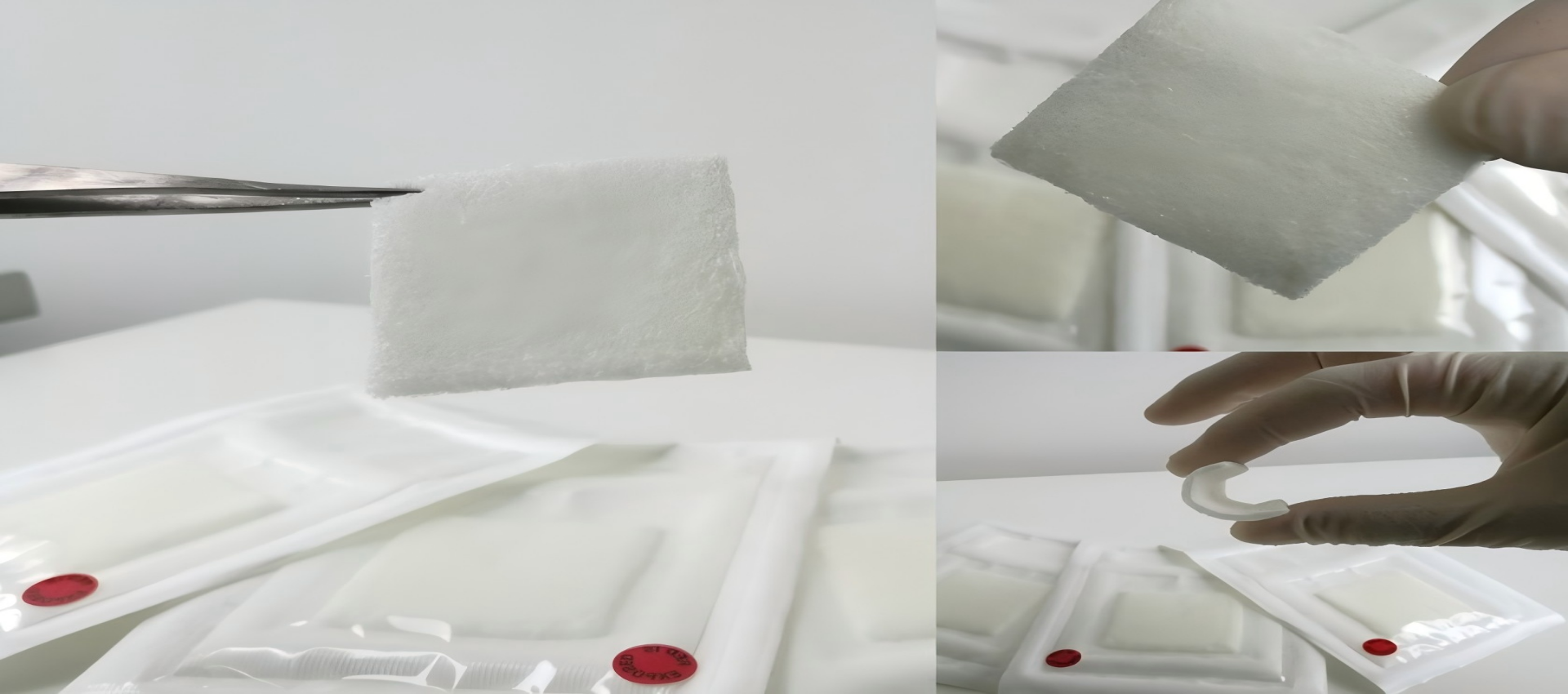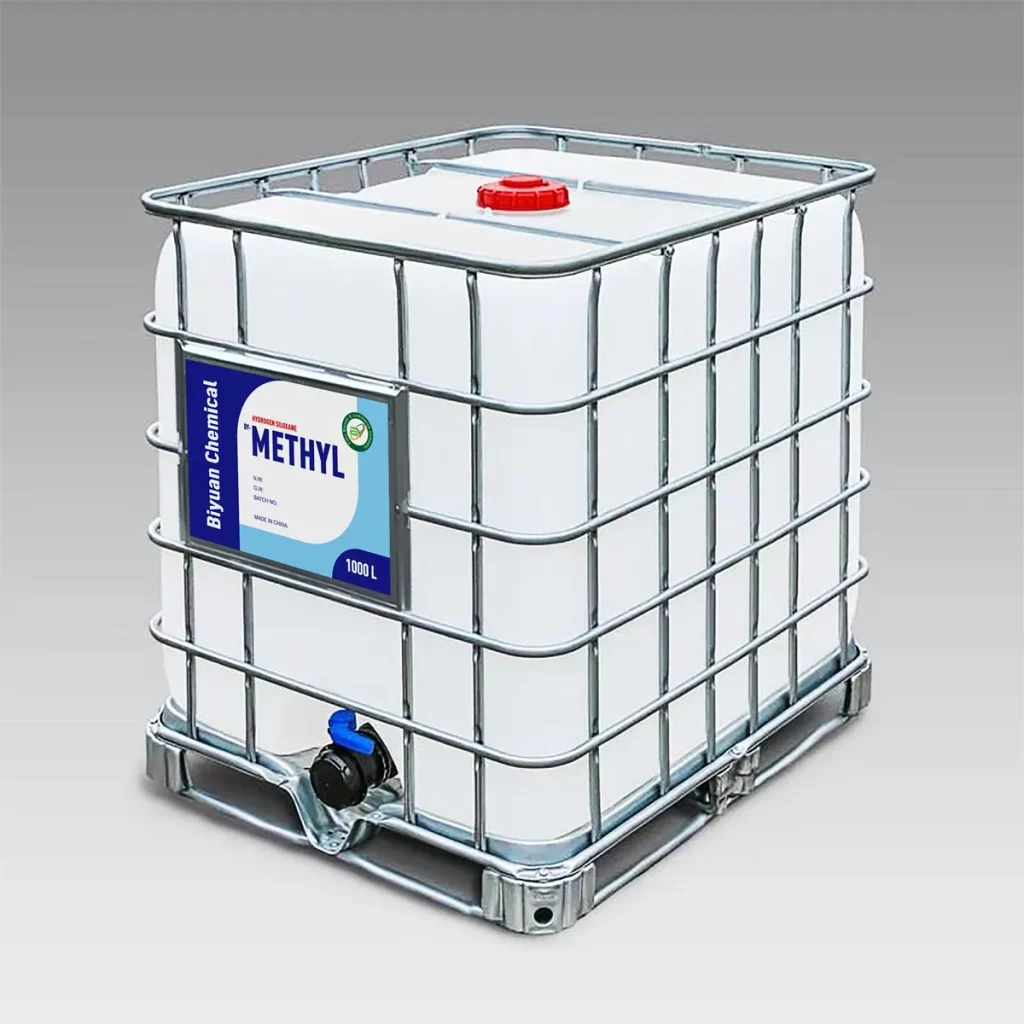
Methyl Hydrogen Silicone Fluid Factory

Methyl Hydrogen Silicone Fluid
Everything you need to know about our products and company
Methyl hydrogen siloxane serves as a versatile functional additive in personal care products, leveraging its unique Si-H reactivity and silicone properties to deliver enhanced performance across various applications. This specialized material acts as an effective cross-linker in hair care products, creating durable yet flexible films that provide long-lasting conditioning and heat protection up to 180°C.
In skincare formulations, it functions as a sensory modifier that imparts a smooth, silky texture without greasiness, while improving product spreadability and active ingredient delivery. The material’s water-repellent characteristics enhance the longevity of sun care and color cosmetic products, providing improved water resistance and wear time.
For antiperspirant and deodorant products, hydrogen silicone oil helps create smooth, non-tacky applications that resist wash-off while maintaining skin comfort. Its chemical stability ensures formulation compatibility and shelf-life stability across diverse product categories.
Meeting international cosmetic standards, this additive offers manufacturers a reliable solution for developing high-performance personal care products that combine aesthetic appeal with functional benefits.
Basic Product Information
TYPICAL PROPERTIES
| Appearance | colorless transparent liquid |
| Viscosity (25℃),mm2/s | 20-250 |
| H% (wt) | 0.04-1.45 |
| Volatile content(150℃,3h),% | ≤11 |
For more specifications,Please email us for detail

Physical Properties
Chemical Properties
Product Functions
Friction coefficient as low as 0.02 (hair-comb system), ensuring effortless glide and reduced surface wear.
Air permeability >8000 g/m²/24h (simulated sebum film), balancing barrier integrity with natural breathability.
Dynamically regulates moisture adsorption/desorption equilibrium to prevent dryness or greasiness.
Dermal absorption rate <0.01% (OECD 428 tested), suitable for sensitive skin and long-term use.
Boosts active ingredient penetration by 30-50%, maximizing functional skincare outcomes.
Core Advantages
| Performance | Traditional Silicone Oil | Hydrogen-Containing Silicone Oil | Test Method |
| Sensory Experience | Obvious artificial slippery feel | Feather-like light touch | Consumer blind test (N=500) |
| Compatibility | Prone to delamination with anionic systems | Full system compatibility (including amino acids) | Zeta potential analysis |
| Wash Resistance (Hair Care) | Residue <15% after 3 rinses | Residue >60% after 7 rinses | HPLC-MS method |
| Transdermal Promotion (Niacinamide) | Penetration amount 12μg/cm² | Penetration amount 19μg/cm² | Franz diffusion cell |
| Stability (45℃/3 months) | Viscosity increase >30% | Viscosity change <5% | ISO 188 |
Market Value
Core Drivers of Market Value
Excellent spreadability and lubricity (surface tension as low as 21 mN/m)
Good breathability and temperature resistance (stable at -40°C to 200°C)
Unique “silicone elasticity” touch (superior to traditional mineral oils)
Low allergenicity (allergy rate < 0.01%)
Biological inertness (passed OECD 301B degradation test)
Free of PEG components (compliant with the Clean Beauty trend)
Good compatibility with silicone/organic ingredients
Broad pH adaptation range (3–11)
Excellent electrolyte stability (salt tolerance up to 20%)
Market Size and Growth
2023 global market size: US$420–480 million
Expected to reach US$650–720 million by 2027 (CAGR 10.8%)
Accounts for 18–22% of the silicone personal care raw materials market
Haircare products (52%): Shampoos, conditioners, hair masks
Skincare products (33%): Face creams, sunscreens, makeup bases
Others (15%): Antiperspirants, shaving products, etc.
Asia-Pacific (45%): Dominated by China, Japan, and South Korea
North America (28%): Concentrated in high-end products
Europe (22%): Strict green certification requirements
Future Growth Points
Men’s grooming products (12% annual growth)
Scalp care market segment
Long-wearing makeup demands
Silicone-active ingredient conjugates
Smart delivery systems
Biomimetic skin technology
Halal cosmetics market in the Middle East
Rise of affordable personal care in Southeast Asia
Natural personal care products in Latin America
Experimental Data & Case Studies
Analysis of International Brand Star Products
Contains 0.8% hydrogen-containing silicone oil derivatives
96% reported “significantly reduced tangling”
83% recognized “voluminous without flattening”
Market share grew 22% annually (Euromonitor data)
Key Formulation:
| Ingredient | Traditional Formula | Hydrogen-Containing Silicone Oil Solution |
| Greasiness Rating (1-5) | 3.8 | 1.2 |
| 48h Moisture Retention (%) | 65 | 89 |
| Active Ingredient Utilization Rate | 40% | 73% |
Ranked TOP 3 in niche category during Tmall 618
Repurchase rate increased to 45%
Preparation Methods, Core Technologies & Precautions
Preparation Methods
Raw Material Preparation:
Mix silicon monomers such as methyl hydrogen dichlorosilane and dimethyl dichlorosilane in specific ratios, and dissolve them in organic solvents like toluene or xylene.
Prepare deionized water and an alkaline catalyst solution (e.g., sodium hydroxide or potassium hydroxide).
Hydrolysis Reaction:
Slowly drip the silicon monomer solution into deionized water under stirring, maintaining the reaction temperature between 0–25°C.
The silicon monomers undergo hydrolysis to form silanols. Control the dripping rate and temperature to prevent excessive reaction.
Polycondensation Reaction:
After hydrolysis, add the alkaline catalyst and raise the temperature to 50–100°C for polycondensation.
Silanols condense to form Si-O bonds, gradually producing hydrogen-containing silicone oil. The reaction typically lasts 2–8 hours, depending on raw material ratios and temperature.
Post-Treatment:
Allow the mixture to settle, separate the organic phase, and wash it to neutrality.
Remove solvents and low-boiling impurities via vacuum distillation to obtain crude hydrogen-containing silicone oil.
Further refine the product through filtration or adsorption to meet standards for cosmetics and personal care applications.
Raw Material Preparation:
Use hydrogen-containing siloxanes (e.g., hydrogen silicone oil intermediates) and organic compounds with carbon-carbon double bonds (e.g., allyl polyethers).
Prepare a catalyst such as chloroplatinic acid in isopropanol.
Reaction Process:
Dissolve the reactants in an organic solvent, add the catalyst, and conduct the hydrosilylation at 50–120°C under atmospheric or slightly elevated pressure.
Maintain stirring to ensure thorough mixing. Control temperature, time, and reactant ratios to optimize product formation.
Product Treatment:
Remove solvents and unreacted materials via vacuum distillation.
Eliminate residual catalyst using adsorption or filtration.
Refine and purify to obtain hydrogen-containing silicone oil with tailored properties for cosmetics and personal care products.
Core Technologies
High-Efficiency Catalyst Selection:
Use highly active and selective catalysts like chloroplatinic acid complexes. These enable efficient hydrosilylation at low concentrations (ppm to ‰ levels), minimizing side reactions and improving yield.
Catalyst Stability and Recycling:
Enhance catalyst stability through modification or supported catalysts for reuse.
Develop recovery methods (e.g., adsorption, precipitation) to reduce costs and environmental impact.
Customized Molecular Design:
Tailor hydrogen silicone oil structures (e.g., molecular weight, hydrogen content, branching) to meet specific performance requirements (e.g., softness, gloss).
Real-Time Monitoring:
Use NMR, GPC, and other analytical tools to monitor reaction progress and adjust conditions (temperature, time, catalyst dosage) for consistent product quality.
Impurity Removal:
Eliminate unreacted materials, catalyst residues, and byproducts via washing, vacuum distillation, and adsorption.
Quality Control:
Test key parameters (hydrogen content, molecular weight, viscosity, surface tension, flash point) using advanced analytical methods.
Adhere to industry standards and customer specifications for rigorous quality assurance.
Key Considerations
Avoid combining with:
High-concentration vitamin C powder (precipitates at pH < 3).
Unneutralized carbomer systems.
Add 0.1–0.3% polyglyceryl fatty acid esters.
Maintain process temperature at 40–60°C.
Packaging & Ordering
Packaging: 200kg/1000kg plastic drums (customizable).
Our most popular products loved by customers worldwide
Methyl hydrogen siloxane serves as a multifunctional additive that significantly improves processing characteristics and final properties in silicone rubber applications. This specialized silicone fluid features reactive Si-H groups that enable efficient cross-linking through hydrosilylation reactions with vinyl-functionalized silicone rubbers. .
Medical-grade Methyl hydrogen siloxane serves as a versatile functional material in healthcare applications, combining high purity with reactive Si-H groups for enhanced performance. This specialized silicone fluid enables precise cross-linking in implantable devices, provides controlled drug release matrices, and creates anti-fouling surface coa.
Methyl hydrogen siloxane serves as a versatile functional additive in personal care products, leveraging its unique Si-H reactivity and silicone properties to deliver enhanced performance across various applications. This specialized material acts as an effective cross-linker in hair care products, creating durable yet flexible films that provide.
Methyl hydrogen siloxane serves as a innovative processing aid that enhances both the efficiency of leather manufacturing and the quality of finished products. This reactive silicone fluid improves leather softness and flexibility through effective fiber lubrication and molecular-level modification. Its unique chemical properties enable superior .